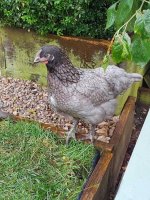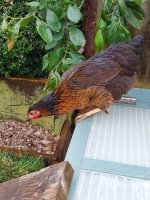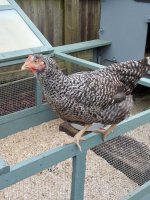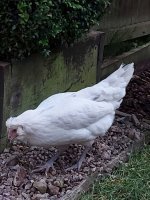Hi, I'm fairly new to hen keeping. I did keep them a few years ago but kids got in the way but now I've more time have had 4 hens again. Love it!
The hens do spend time in the run but at weekends and evenings I let them free range in the garden. My question is should I clip their wings. There is a 6ft fence around the garden but they make me nervous by hopping on top of the run for example then stretching up their necks as if eyeing up the top of the fence!
My second question is red mite powder for dusting the actual hens. We did have a small problem with red mite last time so we use to regularly powder the hens. Also this time I have purchased a plastic recyclable hen coop. I went to buy mite powder from our local corn stores the other day and I was overwhelmed with choice so I was wondering if anyone could advise me on which is the best.
Sat in my garden now watching my ladies wandering round. Love it.
The hens do spend time in the run but at weekends and evenings I let them free range in the garden. My question is should I clip their wings. There is a 6ft fence around the garden but they make me nervous by hopping on top of the run for example then stretching up their necks as if eyeing up the top of the fence!
My second question is red mite powder for dusting the actual hens. We did have a small problem with red mite last time so we use to regularly powder the hens. Also this time I have purchased a plastic recyclable hen coop. I went to buy mite powder from our local corn stores the other day and I was overwhelmed with choice so I was wondering if anyone could advise me on which is the best.
Sat in my garden now watching my ladies wandering round. Love it.



